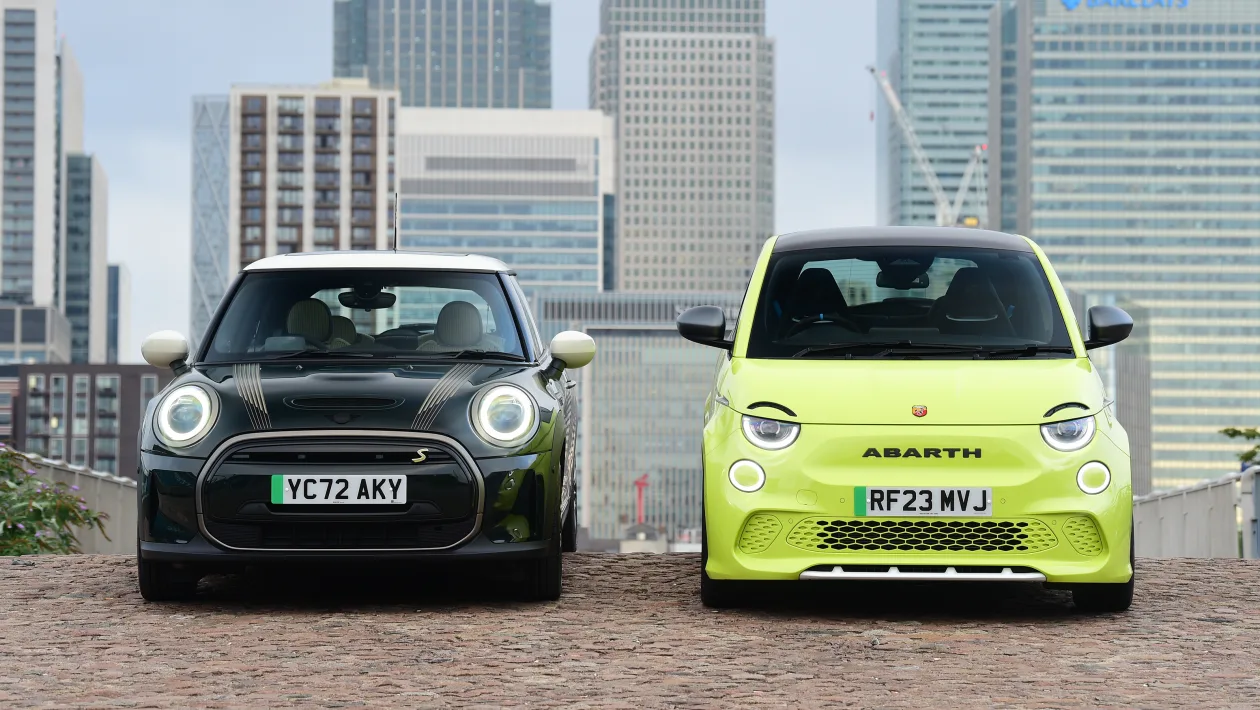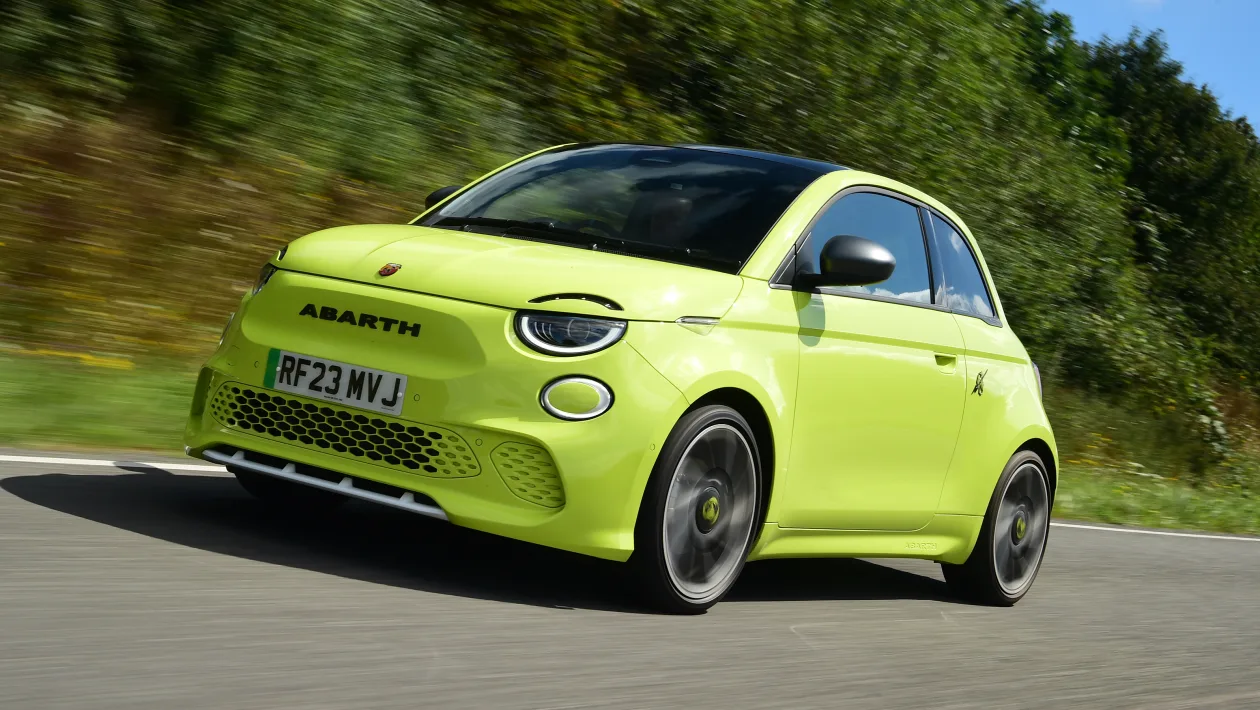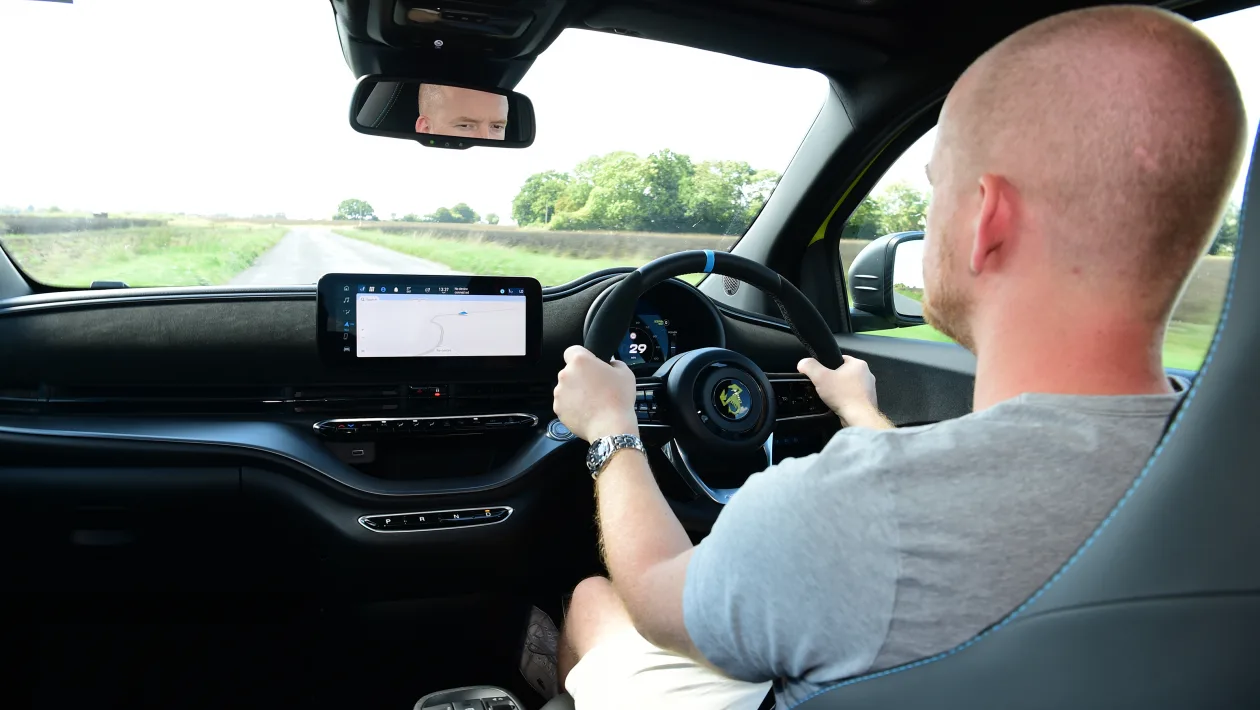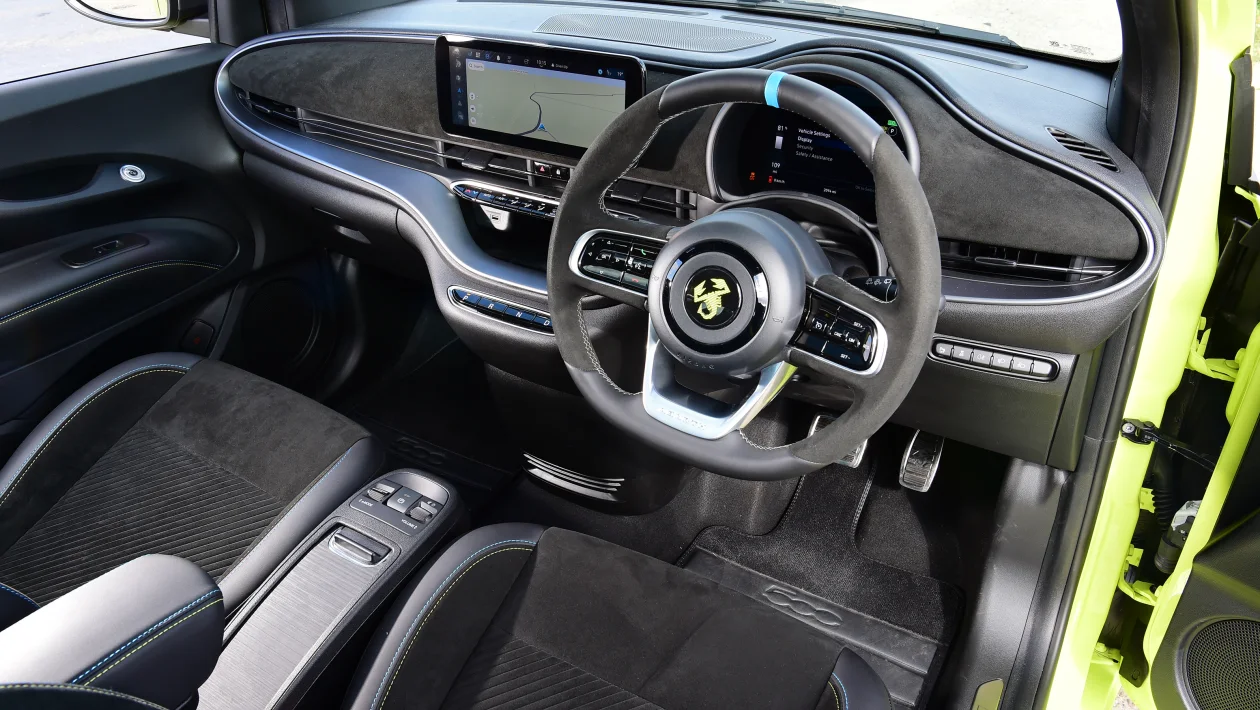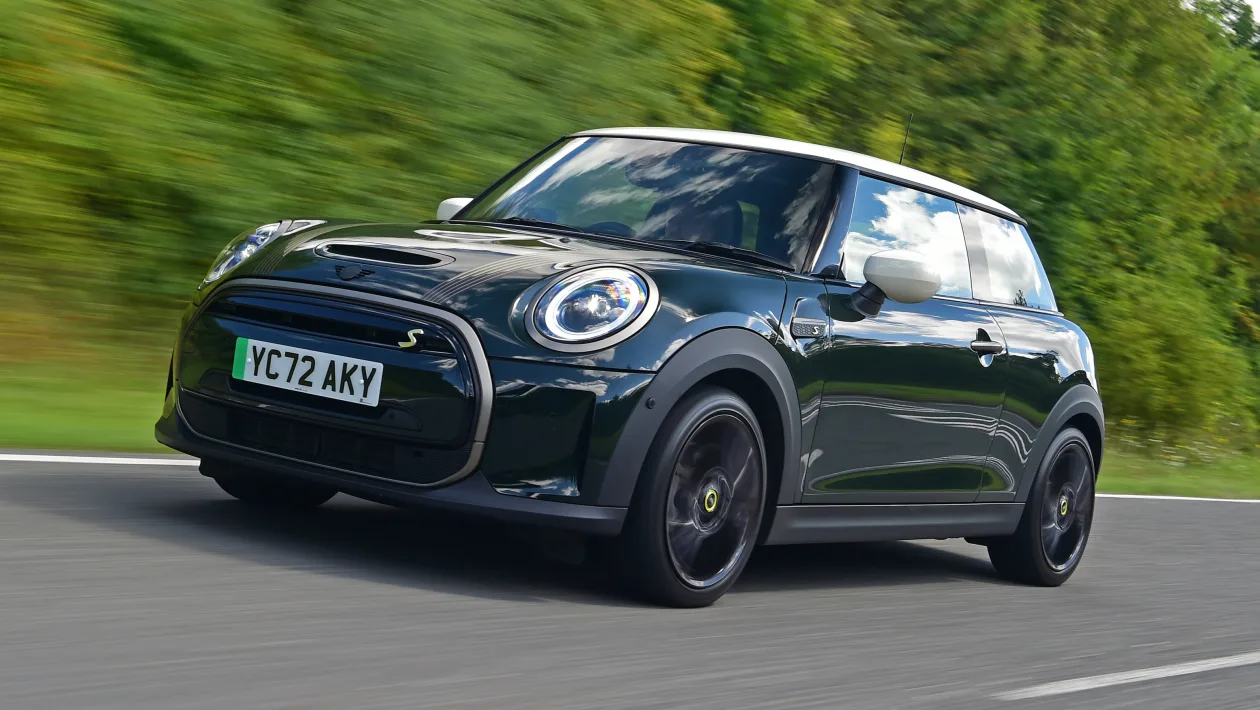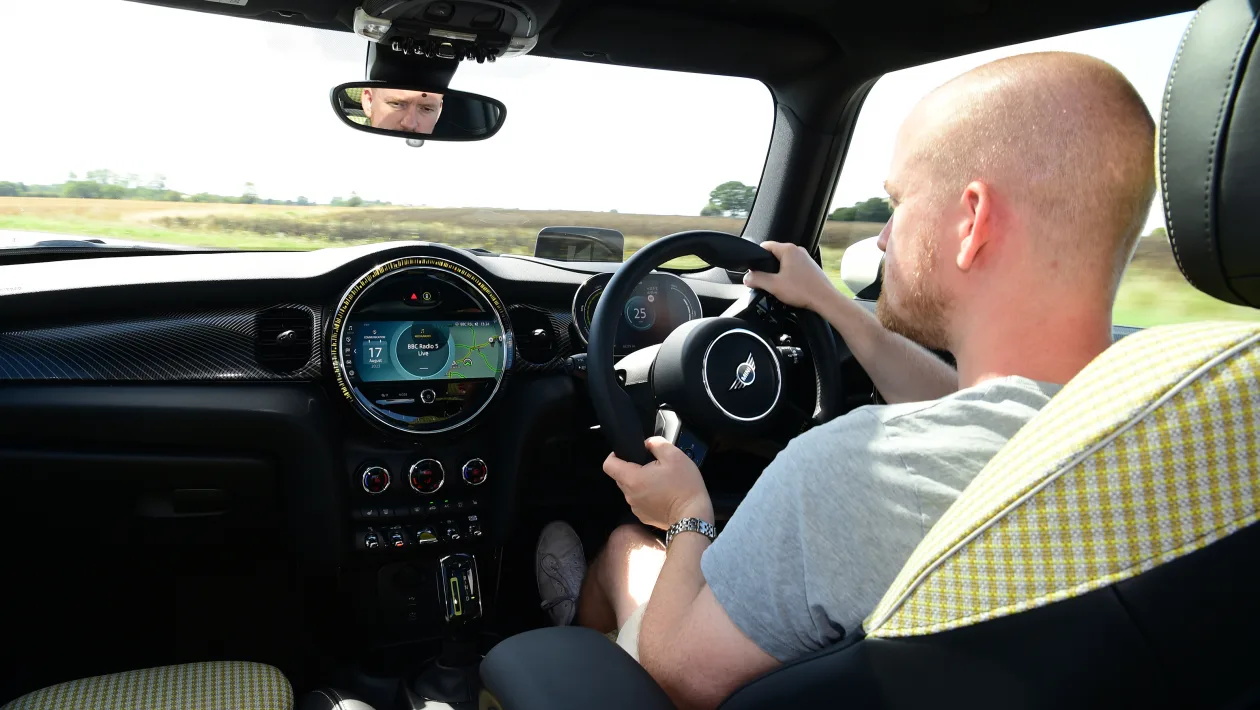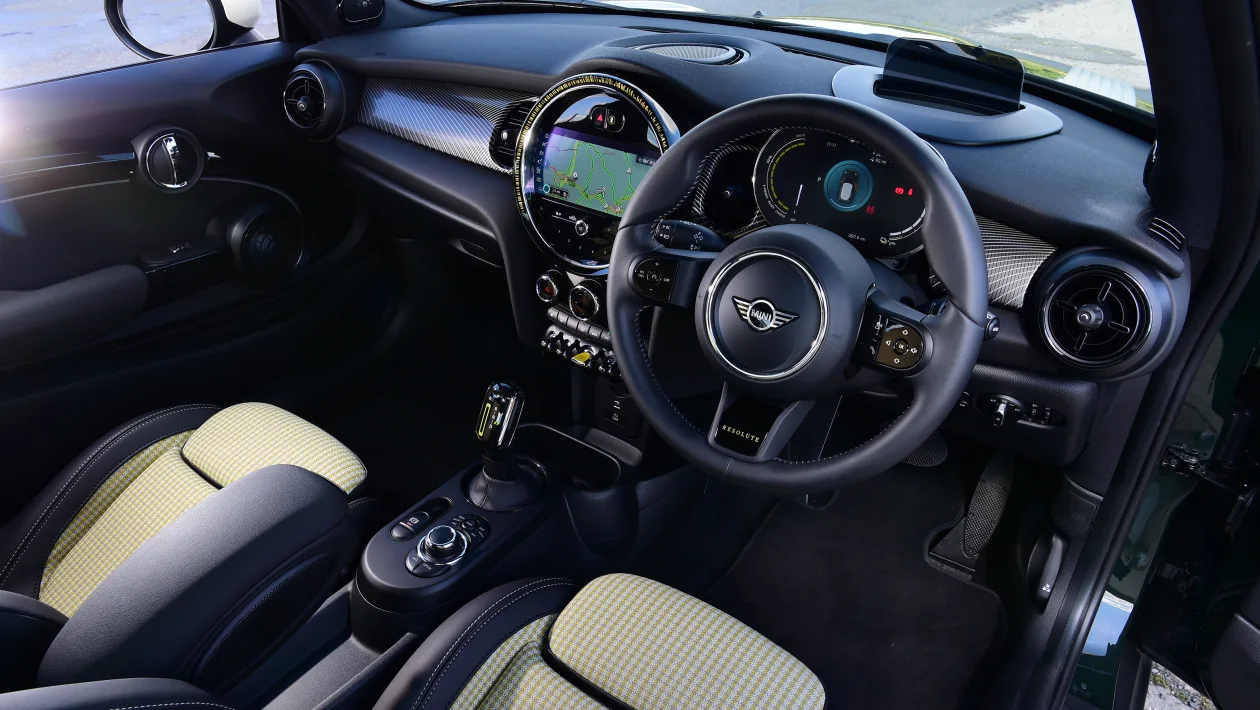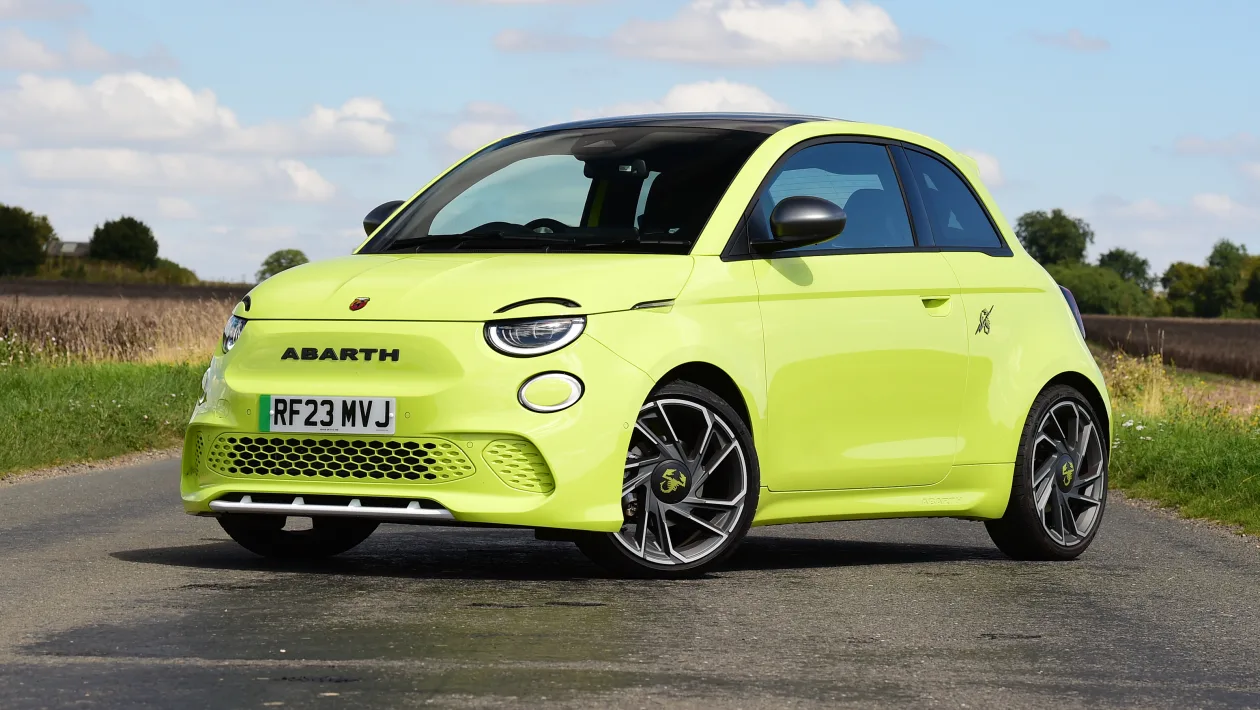The Abarth 500e launches the Italian brand into the world of electric hot hatches – but is it more fun than a MINI Electric?
Can an electric car be fun to drive? EV powertrains have proved on countless road tests that they’re smooth, quiet and efficient, but delivering a fun drive is still something of a challenge. It’s an issue that car makers will need to address when it comes to electric hot hatchbacks.
This is a market where qualities such as excitement, feedback and character matter, so a hot EV will need to be pretty special to make an impact.
The Abarth 500e is one of the first true electric hot hatches on the market, and to find out whether it has what it takes, we’re lining it up against one of the most entertaining small EVs we’ve tried so far.
In all its forms, the MINI is a charming city car, but it’s also loads of fun to take to the nearest B-road. So which is best? We find out in our real-world test.
Abarth 500e
Abarth has a long history of getting its hands on humdrum Fiats and turning them into something a little more wild. In the case of the original rear-engined 500 of the sixties, that entailed sticking a more powerful motor in the back, and in some cases meant that the dinky engine cover would need to be left open for cooling.
While the new Abarth 500e’s bonnet can close just as easily as it does on the standard Fiat version, there is a significant boost in power. A total of 113kW is an increase on the car on which it’s based, while a torque figure of 235Nm is a 15Nm jump. Those figures look fairly modest, but at 1410kg, the 500e is light by EV standards, and only 49kg heavier than a petrol-powered Volkswagen Polo GTI.
Abarth doesn’t go into too much detail about what it has done to sharpen up the 500e’s chassis when compared with the Fiat variant, but it states that the spring and damper settings are unique, while there’s a revised throttle map and a new gear ratio for the single-speed transmission.
The Abarth’s power is limited in Comfort mode. To access the full whack, you need to switch to one of the two Scorpion modes – the latter of which also includes gentler regenerative braking.
The Abarth 500e hasn’t been tested by Euro NCAP, but the Fiat 500e has. It achieved a four-star rating in 2021, with its best score of 80 per cent coming from the Child Occupant category.
The chassis set-up is the Abarth’s highlight. Not only is the car a huge amount of fun in corners, but there’s also genuine sophistication to its behaviour, which helps both its ride and handling.
Even moving off from a standstill gives you a clear insight into the 500e’s character, because it’s eager to accelerate the second you touch the pedal. It takes 2.9 seconds to sprint from 0-50km/h, and this lively pace and the car’s tiny dimensions make the Abarth a fantastic city runabout. It’s also helped by a ride that, although firm, has the ability to round off sharp bumps in a way that only very finely tuned dampers can deliver.
The smiles continue at higher speeds. A 0-100km/h time of seven seconds isn’t far shy of a Hyundai i20 N, and traction is excellent, so you can fire out of corners with plenty of enthusiasm.
It takes a little longer to appreciate the chassis, though, because it’s initially hampered by an overzealous stability-control system. Disable this, and the agile and adjustable yet predictable chassis is exciting without being intimidating.
We’d like more choice for the brake regeneration, though. Its strength is fixed to the drive mode, and in both Comfort and Scorpion Street, it’s extremely strong, which makes it tricky to drive smoothly when pressing on. As a result, we chose Scorpion Track most of the time, where the regen is milder.
The Abarth’s power and gearing mean there’s a WLTP-tested range of 253km, which is down from the Fiat 500e’s 320km. Longer journeys will take planning, and a 110km/h cruise will return a shorter range than the 243km we achieved in the mixed environments of our test.
A variety of upgrades has transformed the Fiat 500e’s cabin into a sportier environment for the Abarth version. The colour scheme is chief among them; in place of light and colourful seat fabrics there’s part-leather, part-Alcantara upholstery with only bright stitching highlights. The same goes for the dashboard; where the Fiat gets a full-width body-coloured panel, here it’s finished in Alcantara.
The steering wheel is a three-spoke, flat-bottomed item and it feels great to hold, but the driving position itself is quite high. This gives a good view ahead, but doesn’t feel particularly sporty. There isn’t a proper rest for your left foot, either; instead, you get a little step in the footwell that’s not quite wide enough to comfortably press against. There are some cheap-feeling plastics on the doors and the lower part of the dashboard, too, but overall the cabin feels modern, funky and sporty.
Interior storage is quite generous for a car of this size. The glove compartment is spacious, while lifting up the central armrest reveals a very deep cubby below. Ahead of that is a long sliding lid, which reveals another large storage area that also contains a pair of cup-holders. However, these are so low within the space that smaller cans and coffee cups are hard to retrieve. The smartphone shelf, which includes wireless charging in Turismo trim, is large and mounted high up on the dashboard, while the door pockets have space for larger bottles.
At just 3.6 metres long, the Abarth is one of the smallest cars on the road, so interior space isn’t a priority – or a strength.
Even getting into the back seats is tricky, because the front seats can’t slide forward very far, and they don’t always return to their original spots, either.
There’s only space for two in the back, but the curving edges of the roof mean that those two occupants will find things a little tight, and kneeroom is cramped even for adults of average height.
On the plus side, foot space under the front seats is generous, and there’s Isofix for the front passenger seat, so you don’t have to wrestle a child seat into the back.
At 185 litres (or 550 litres with the back seats folded), boot space is limited, and the opening isn’t very large, either. What’s more, much of that volume is taken up by the charging cable and its bag.
MINI Electric
There’s one key difference between these two in terms of their development. While the Abarth uses a platform designed specifically for electric vehicles, the MINI’s structure has been adapted from an existing internal-combustion platform.
At 3850 millimetres long, the MINI is 177mm longer than the Abarth, and it’s 44mm wider than its rival, too. That’s still a compact footprint in which to cram quite a lot of electric tech, however. Under that iconic MINI nose sits a motor with 135kW and 270Nm – figures that are ahead of the 500e’s – which sends drive to the front wheels.
However, the MINI loses out to its rival when it comes to both battery capacity and charging tech. In the case of the former, its gross capacity of 32.6kWh is 9.4kWh down on the 500e’s, which helps to explain its 227km WLTP range, compared with the Abarth’s 253km in the same test.
At 50kW, its charging speed is lower than the newcomer’s, which can replenish its battery at a maximum of 85kW. To help with the MINI’s packaging, the battery is stored under the back seats and within the spine of the car’s floorpan – where the exhaust would otherwise be routed in the combustion-engined models.
There’s no Euro NCAP test score for the MINI Electric, because its combustion-engined counterpart was assessed back in 2014. Tests have become much more stringent since then, and that car’s four-star score only applies for six years. All models get traffic-sign recognition and all-round parking sensors as standard, though.
Despite its compact size, the MINI manages to deliver the feeling of sturdiness and composure of a larger car, which makes its fun handling all the more impressive. It’s just a shame that the small battery and resulting short range don’t give you enough of an opportunity to appreciate it.
This is the ideal environment for the MINI, and it manages to pull off a neat trick of being as agile as the Abarth, but also with a more solid feeling. The ride, although firm, does a great job of insulating thumps and bumps from the cabin, and the damping controls body movements well. Throttle response is a little softer than in the Abarth, so it doesn’t feel as lively off the line.
Compared with the Abarth, the MINI feels slightly more playful and adjustable. While neither car has much body roll, the MINI feels as if it loads up its outside tyres slightly more, and this gives a better impression of how much grip there is available to exploit.
In the case of our test car, there was less grip than in the Abarth. However, having tried plenty of other MINIs that grip more strongly, we put that down to the Goodyear tyres fitted to our car.
As with the Abarth, the MINI’s steering is direct, but it feels a little more vague when turning in, and there’s not much feedback. This takes the edge off driving enjoyment when compared with its rival.
Given the MINI’s relatively short range, it’s not a good car for regular motorway use; consumption of 5.8km per kilowatt hour means a 165km range is roughly what to expect in the real world. If you do need to head further afield, the MINI’s larger dimensions means it feels a little more planted than the Abarth.
We’re driving the MINI Electric in the special-edition Resolute trim, which gets a number of cosmetic upgrades over the standard model. The first step is that the exterior has lost its chrome trim – a feature that will be standard on future MINIs. In most of the chrome’s place, there’s a bronze finish instead, which is found on the headlamp bezels, door handles, grille surround, tailgate and side trims. The roof and door mirrors are white, while the bonnet gets a pair of gold stripes.
Inside, there’s a lively chequered fabric on the seats’ centres with leather bolsters (a more sober full-leather option is available at no extra cost), while the dashboard panels feature curved gold pinstriping across a gloss-black surface.
Although there’s a new MINI on the horizon, the current car’s cabin still looks contemporary and feels solid, and not just by the traditionally budget-conscious standards we tend to accept of city cars, either. Ergonomically, it’s also sound. The big, chunky dials are great for adjusting the air-conditioning on the fly, while the toggle switches feel reassuringly solid and form part of the MINI’s unique character.
Passengers in the back are well catered for with cup-holders, because there are three to share between two seats. There are two more up front, too, but if you’re not so thirsty, the storage options are a little more limited. The door pockets are fairly slim, the glovebox is a decent size, there’s a modest pocket beneath the central armrest and another ahead of the gear selector that’s not quite large enough to neatly hold a smartphone.
It’s unlikely that either of these cars will be bought on the strength of their rear-seat accommodation, but the MINI has a very slight edge when it comes to overall space and comfort.
There’s only a few millimetres in it, but the MINI has a tiny bit more space in the back than the Abarth. The seat squabs are longer, too, so they offer more under-thigh support.
Headroom is also more generous, although the narrower glass area all round makes it feels a little more gloomy than the Abarth, even with the standard sunroof.
Boot: Neither car has a vast boot, but the MINI just pips its rival, with a 211-litre volume. The load lip is a little lower, too, so it’s easier to lift items inside. The 60:40 rear seat backs fold to create 731 litres of space, but they leave a pronounced step in the boot floor.
Winner: Abarth 500e
The 500e wins because it best fits the hot hatchback brief. It’s quicker than the MINI (if only just) and it feels livelier and the most eager to please. Its main strengths lie in its massive personality and huge grin factor – regardless of the speed at which you’re driving.
It’s by no means perfect; the biggest downside is its high price, but more competitive monthly finance rates would see it grab back the extra half star that we gave it on our first encounters.
Runner up: MINI Electric
Given its age, the Mini stands up well against its latest rival. It’s almost as quick in a straight line, equally playful through the corners, and its cabin quality feels a cut above the Abarth’s.
However, that range between charges is too much of a compromise, and will limit it mostly to city driving (where its fun handling is harder to appreciate) or to second-car status, at which point it looks pricey.





